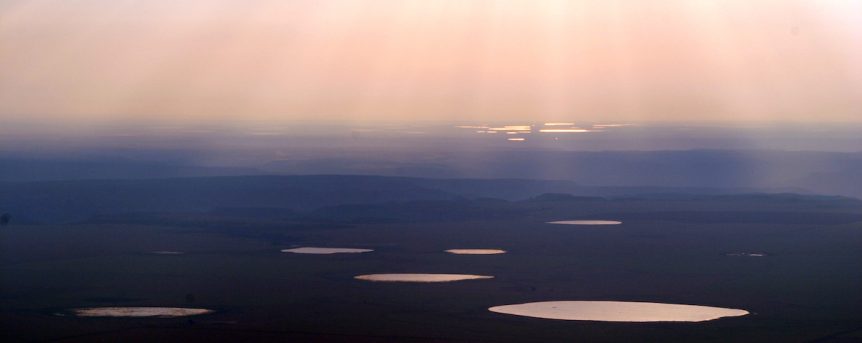Read the Transcript
On today’s episode, another Natural Resources Conservation Service success story. This time, the experiences of a central Kansas producer who’s gained experience with the Wetlands Reserve Program, now part of the Agricultural Conservation Easement Program under the 2014 Farm Bill.
Wetlands Reserve Easements are suited for frequently flooded agricultural lands, lands on which playa lakes or rainwater basins might reside. Landowners can choose a 30-year or a perpetual conservation easement. Depending on the enrollment option, Wetlands Reserve Easements pays the landowner to remove the land from ag production, and can pay 75 to 100 percent of restoration costs. Dale Schmidt is a young farmer who bought some Land near McPherson in central Kansas a few years back.
“I bought the property in 2006, and in 2007 the whole thing went under water. It is a low area, along a drainage district. It is also in an area that is part of the chain of lakes that runs from just northwest of McPherson clear down to the Arkansas River.”
Schmidt bought the land to farm it, but he knew it wasn’t a prime piece of farm ground.
“It is productive when you don’t get too much rain, but drought years are the best years.”
“Drought years are the best years.” Isn’t that the way it is, trying to farm through a wetland? In a normal year’s precipitation, Dale says he might have been planting in mud or harvesting in mud, and with the cost of inputs these days, well. . .
“I decided to enroll it in the WRP; I went with lifetime perpetual easement.”
A perpetual conservation easement. He contracted away his rights to ever build a house or a barn. No oil or gas wells. . . never be able to put up a wind turbine. No matter what crop prices do, never be able to farm it again.
“At first I questioned it slightly. There were some things going on in agriculture where prices started going up.”
But then, reason took hold, and Dale Schmidt remembered what it was like, trying to farm through a mudhole.
“On a normal year, I was going to lose to flooding maybe 25% of that crop. So I decided to go into it. Since then I’m very pleased with it. It put back into conservation what really should have probably stayed in something like that. It is a low lying, very heavily clayed property.”
You could make the argument this land was returned to its best use. This project is reaching well beyond the property boundaries to improve watershed health, to help recharge the Equus Beds Aquifer, and to provide wonderful habitat for migratory birds and other wildlife. Dale described for me the work NRCS has performed. . . some grading and excavation. His description made it sound very complex. I called up Blake McLemore, his NRCS district conservationist.
“It is one of the neatest WRPs I’ve ever seen. There is kind of a horseshoe. It almost creates a peninsula in one area and the water just kind of goes around that peninsula and creates this very unique shape. Normally a WRP might be a couple depression areas, just circular pool areas, but Dale was able to set up a couple of these horseshoe type shapes. I think there was an area where there was a small island.”
Dale and Blake both make this project sound like a haven for the birds. Blake says Dale has been active, mowing the grass along water’s edge.
“By allowing that grass to be shorter, it’s easier for the birds to get in and out of the water. Then right beyond the mowed areas, it’s back to tall and thick grass, so they can go in there for cover if they need to. But right there where it’s mowed short it’s just easier for them to get in and out of the water more quickly. He is doing a great job with his management of it.”
Playa Country, which ended in late 2016, was a weekly show that featured conservation and wildlife experts — as well as farmers, ranchers and land managers — talking about conservation practices that improve wildlife habitat and landowners’ bottom-line. This episode was made possible by funding from Natural Resources Conservation Service.

